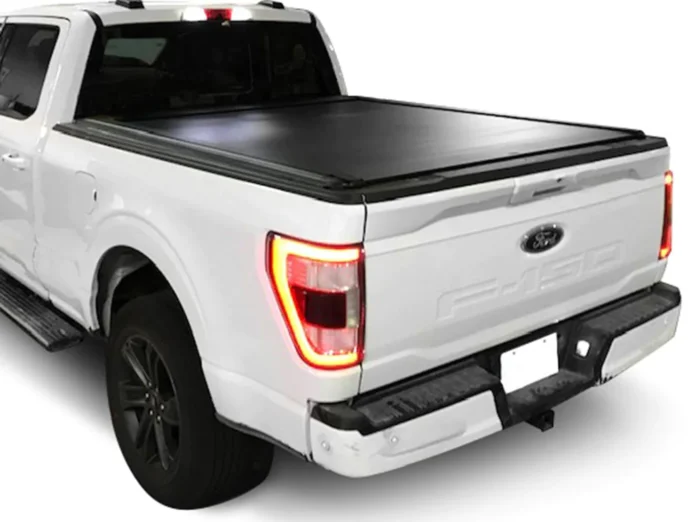A tonneau cover is an essential accessory for any truck owner, offering protection and security for cargo stored in the truck bed. However, without proper maintenance, even the highest-quality tonneau covers can quickly deteriorate, becoming susceptible to damage and failing to provide adequate protection for your belongings.
Regular maintenance is key to ensuring it remains in top condition and provides reliable protection for your truck bed and cargo. Maintaining your tonneau cover is a simple process that can help prevent costly repairs and replacements in the future.
In this article, we will explore some essential tips for maintaining those, including cleaning and protecting it, maintaining its components, and troubleshooting common issues. By following these guidelines, you can extend the life of your tonneau cover and ensure it continues to provide reliable protection for years to come.
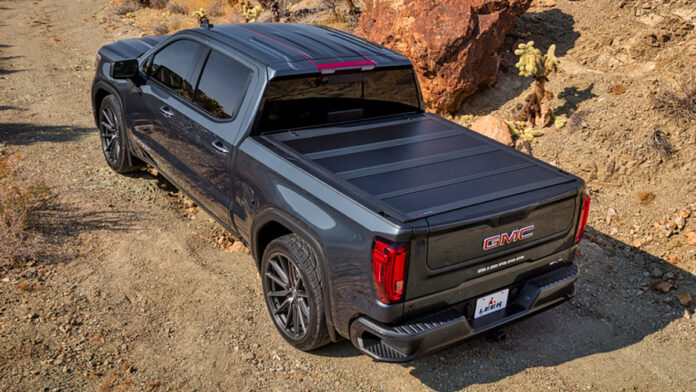
Different Types of Tonneau Covers
There are several types available on the market, including hard and soft covers, and retractable covers. Each type requires different maintenance techniques to ensure longevity.
Hard Covers:
- Use a gentle soap and water solution to clean.
- Avoid using harsh chemicals or abrasive cleaning tools that could scratch the surface.
- Apply a UV protectant to the cover to prevent fading or cracking due to exposure to sunlight.
Soft Covers:
- Use a soft-bristled brush and mild soap to clean it.
- Avoid using bleach or other harsh chemicals that could damage the fabric.
- Apply a fabric protectant to the cover to prevent fading, cracking, or water damage.
Retractable Covers:
- Use a gentle soap and water solution to clean the cover.
- Avoid using harsh chemicals or abrasive cleaning tools that could scratch the cover’s surface.
- Apply a UV protectant to the cover to prevent fading or cracking due to exposure to sunlight.
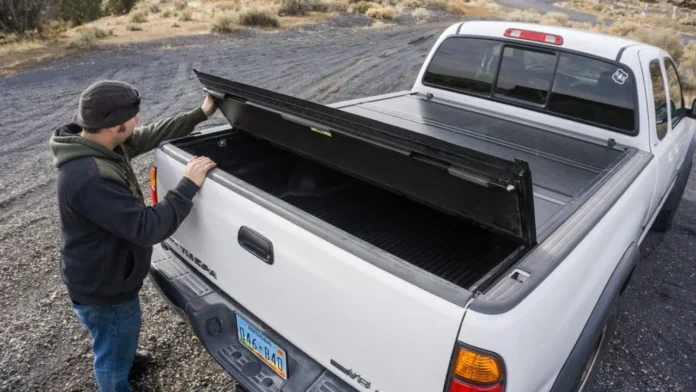
Expert Tips to Maintain Your Truck Tonneau Cover
Clean Your Tonneau Cover Regularly
One of the most critical steps in maintaining your tonneau cover is keeping it clean. Dirt, debris, and other contaminants can build up on the cover, leading to scratches, stains, and even damage over time. To avoid this, clean your tonneau cover regularly using a mild detergent and a soft-bristled brush. Rinse thoroughly with water and dry with a clean towel or allow it to air dry.
Protect Your Tonneau Cover from Environmental
Factors Weather, UV rays, and other environmental factors can cause damage to your tonneau cover over time. To protect your cover, consider using a UV protectant spray or treatment specifically designed for tonneau covers. This will help prevent fading, cracking, and other damage caused by exposure to the sun and other elements.
Maintain Your Tonneau Cover’s Components
The hinges, locks, and other components of your tonneau cover are essential for its proper function and longevity. Regularly inspect and lubricate these components to ensure they are functioning correctly. Use a silicone-based lubricant for the hinges and locks, and check the tension of the support system.
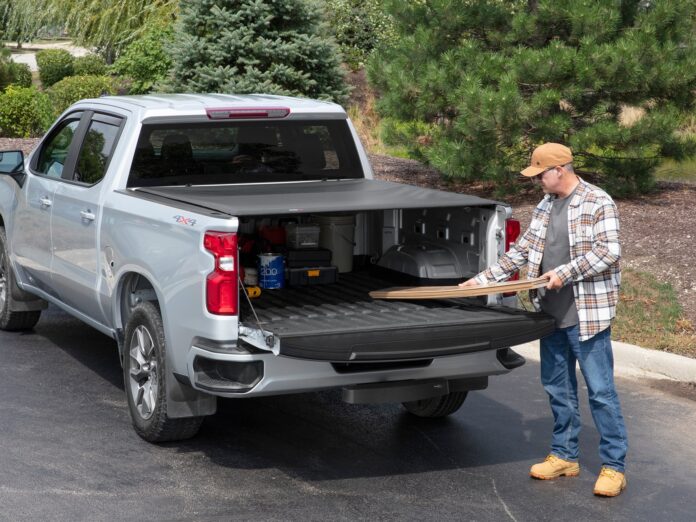
Store Your Tonneau Cover Properly
When not in use, it’s essential to store your tonneau cover properly to prevent damage and prolong its lifespan. If you have a soft cover, remove it from the truck bed and store it in a dry, cool location. For hard covers, make sure to lock it in place and secure any clamps or bolts. Use a storage bag or cover to protect it from dust and debris.
By following these essential tips for maintaining your tonneau cover, you can extend its lifespan and ensure long-term use and reliable protection for your cargo. With proper care and maintenance, your tonneau cover will continue to enhance the appearance and functionality of your truck for years to come.
Don’t Leave Heavy Gear on It
Leaving heavy gear on your tonneau cover for an extended period can put excessive strain on the support system, leading to sagging or even permanent damage. Additionally, heavy gear can cause the cover to warp, creating gaps that allow moisture and debris to seep into the truck bed.
To avoid these issues, make sure to distribute heavy gear evenly across the truck bed, rather than placing it all on the tonneau cover. If you must leave heavy gear on your cover for an extended period, consider using support bars or other accessories designed to distribute weight evenly.
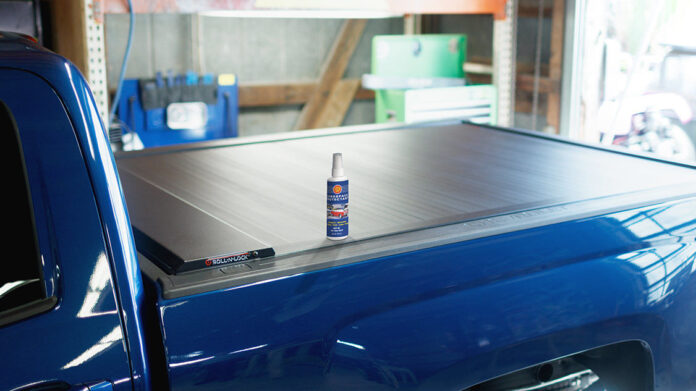
How to Choose the Right Protectant for Tonneau Cover
Choosing the right protectant is crucial when it comes to maintaining your tonneau cover. Using the wrong protectant can cause damage to the cover, leading to a shorter lifespan and decreased protection for your cargo. Here are some essential tips to keep in mind when selecting a protectant for your tonneau cover:
- Avoid Harsh Chemicals: When choosing a protectant for your tonneau cover, avoid harsh chemicals that can cause damage or discoloration. Avoid using bleach, ammonia, or other abrasive cleaners that can break down the cover’s material and strip it of its protective coating.
- Look for a UV Protectant: UV rays can cause significant damage to your tonneau cover over time, causing it to fade, crack, or become brittle. To protect it from the sun’s harmful rays, look for a protectant that includes UV protection. This will help prevent fading and damage caused by exposure to the sun.
- Consider the Material of Your Cover: The type of material it is made of can also impact the type of protectant you should use. For example, if you have a vinyl cover, look for a protectant that is specifically designed for vinyl materials. This will help ensure that the protector is compatible with the cover’s material and will not cause damage or discoloration.
- Follow the Manufacturer’s Guidelines: Finally, always follow the manufacturer’s guidelines when selecting a protectant for your tonneau cover. Different ones may require different types of protectants, and using the wrong product can cause damage or void any warranty on it.
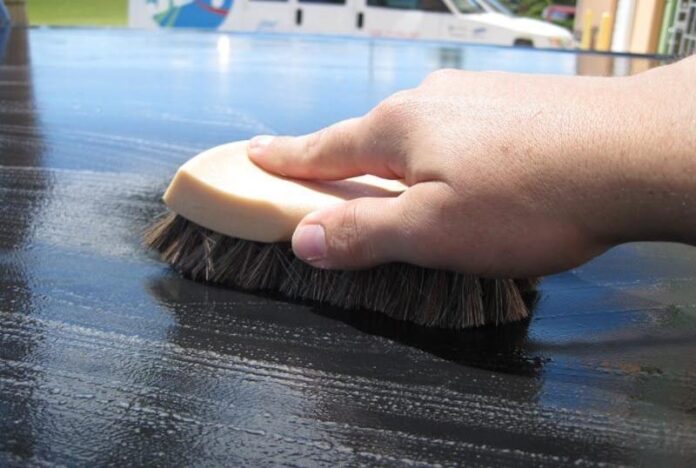
The Right Ways of Cleaning Truck Bed Tonneau Cover Surfaces
Cleaning your truck bed tonneau cover is an essential part of maintenance to ensure its longevity and effectiveness in protecting your cargo. Here are the steps to follow for cleaning your tonneau cover surfaces:
- Remove Any Debris: Start by removing any debris on the surface, including dirt, dust, and leaves. Use a soft-bristled brush or a leaf blower to remove the debris gently. Be careful not to scratch the cover with any sharp or hard objects.
- Use Mild Soap and Water: Next, mix a small amount of mild soap with water in a bucket. Dip a soft cloth or sponge into the mixture and wring out excess water. Gently scrub the surface with the cloth, making sure to cover all areas thoroughly.
- Rinse with Water: After scrubbing, rinse the surface with clean water. Use a hose or bucket of water to rinse the soap off. Make sure to remove all the soap from the cover as it can cause damage if left on the surface.
- Dry the Cover: Once you have rinsed the surface, use a dry towel or a clean cloth to wipe off any excess water. Ensure that the surface is completely dry before you close it. If you close it while the surface is still wet, it can cause mold and mildew to grow on the cover.
- Apply Protectant: After the tonneau cover surface is dry, apply a protectant specifically designed for your tonneau material. The protectant will help prevent the cover from cracking, fading, and other types of damage. Apply the protectant according to the instructions provided by the manufacturer.
Conclusion
Maintaining it regularly is crucial to ensure its long-term use and protect your cargo. Cleaning it, protecting it from environmental factors, and maintaining its components can prevent damage, deterioration, and costly repairs or replacement. Following the guidelines outlined in this article can help keep your tonneau cover in top condition, ensuring that it provides reliable protection for your truck bed and cargo for years to come.
Source: https://www.autowily.com/best-tonneau-covers-for-ford-maverick/

